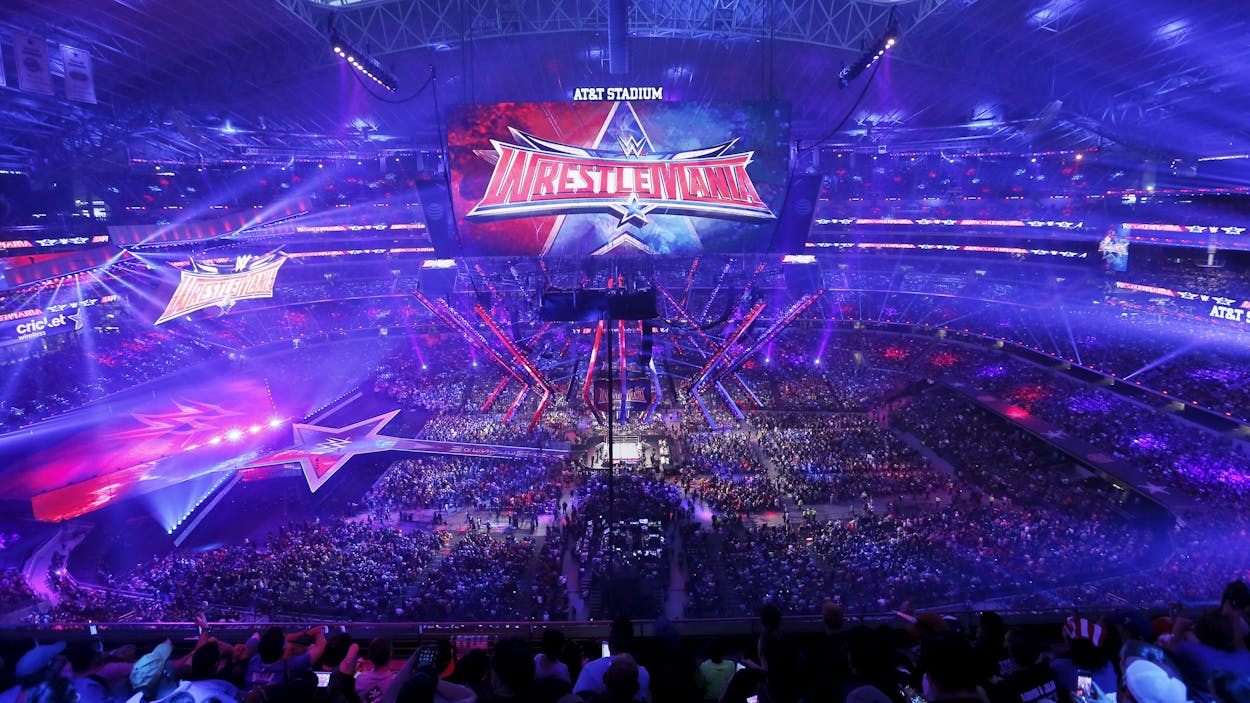WrestleMania 32 was Sunday night, and people were psyched. It was the event’s first appearance at AT&T Stadium, and promised appearances by stars ranging from The Rock to, er, Shaquille O’Neal. And that’s to say nothing of the surprises—like the return of stars such as John Cena (fresh off of shoulder surgery), Stone Cold Steve Austin, Mick Foley, and more to the WWE stage.
But also, people were mad. And that sprung from a few reasons: the climax, which came nearly six hours into the event, featured whatever-the-opposite-of-a-fan-favorite-is Roman Reigns taking the championship. They were mad because six hours is a long friggin’ time to watch anything. And they were mad because, once more, AT&T Stadium proved that it still struggles with big events. As Deadspin noted, ticket holders had a hard time actually getting in:
Irate fans chanted “LET US IN! LET US IN!” as a stadium ticketing issue kept tens of thousands of pro wrestling fans from entering the stadium in Dallas before tonight’s Wrestlemania kicked off at 6 p.m. local time.
The stadium and the WWE told Deadspin that “increased security measures” were to blame for the delays, though the specifics aren’t clear. On the ground, a story spread that a WiFi issue (an embarrassing problem for a stadium named after a telecommunications giant) kept the venue from being able to scan tickets. Whatever the cause, the issues seemed to last at least until the start time—which makes sense, given just how deep those lines stretched.
Line outside the stadium. #WrestleMania pic.twitter.com/pvBUdIgjkr
— PWM (@ProWrestlingMag) April 3, 2016
And getting people from the outside to their seats seemed to be an arduous process, as well. Fans continued to chant, “Let us in!” from the concourse.
I'm standing in the 300s just to avoid this madness #WrestleMania pic.twitter.com/R5RNagqSW7
— Brandon F (@TheRealClassic) April 3, 2016
Ticket prices to get into the venue averaged a cool $301 on the resale market, according to StubHub, which presumably helps explain why people were upset. But though problems can crop up anywhere, especially at events that are hosting 100,000 people, AT&T Stadium probably ought to be better at this: After all, it’s not the first time they’ve had issues.
@TheRealClassic we're currently down in that mess pic.twitter.com/As1VY0Mkbq
— Glen Joseph (@Glen_Joseph) April 3, 2016
Back in 2011, the stadium played host to Super Bowl XLV, and it faced admissions issues of its own—namely, the stadium was oversold by nearly 1,200 seats (which hadn’t been completed at the time of the event) and fans who purchased tickets found obstructed views. The NFL lost a lawsuit as a result, and paid out $76,000 in damages to the fans who didn’t get what they’d paid for. The issues are different this time out, but it’s still a bad look for a stadium that’s meant to be one of the jewels of American event hosting. Given the immense resources that went into putting what are, perhaps, the two biggest ever hosted at AT&T, they really ought to have figured these issues out well in advance.








